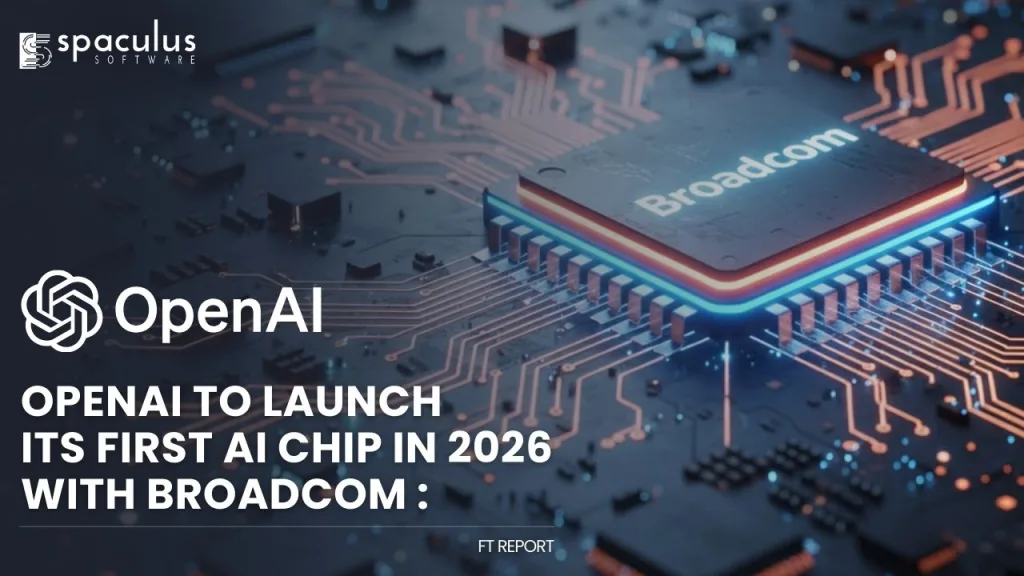
OpenAI is reportedly working with Broadcom to roll out its first in-house AI chip by 2026. That’s more than news, it’s a signal. A signal that the AI wars are no longer just about models and data; they’re about controlling the silicon behind them.
The National CIO Review (among others) reports that the chip will be for internal use, not to be sold publicly, and is part of a strategic move to reduce reliance on GPU makers like Nvidia.
Here’s a clearer, more grounded look at what’s going on, what it might imply, and what OpenAI must navigate to make this work.
1. Cost, Efficiency & Margins
Running large models eats up a lot of GPU time. Renting or buying top-tier GPUs is expensive, and margins in AI services are tight. If OpenAI can build chips precisely tuned for its models, it can reduce wasted overhead (unused cores, mismatched memory access, etc.), and potentially lower cost per inference or training step.
2. Supply Chain Independence
Right now, OpenAI depends heavily on external suppliers-especially Nvidia. That dependency brings vulnerability: supply bottlenecks, price fluctuations, and limited leverage. Building its own silicon gives more control over timelines, capacity, and performance tradeoffs.
3. Co-Design for Model + Hardware
When you design the chip and the software stack, you can optimize them together. OpenAI could build hardware that’s especially good at the types of tensor operations, memory access patterns, or interconnects its models use more efficient than trying to shoehorn models into off-the-shelf GPUs.
4. Future-Proofing for Bigger Models
Every generation of AI models tends to double or more in size. To keep up, infrastructure must scale. By owning the hardware, OpenAI can design for the next wave larger parameter counts, more parallelism, more memory bandwidth without being constrained by generic GPU architectures.
From the National CIO Review article and other reporting:
What we don’t know:
This is not a trivial project. Even big tech firms stumble when they try to develop custom hardware. Some of the risks:
OpenAI isn’t doing this in isolation. Others have trodden parts of this path:
| Company | In-House Chip | Purpose | Notes |
| TPU | AI training & inference | One of the early moves to custom AI silicon | |
| Amazon | Trainium / Inferentia | AI workloads on AWS | Meant to reduce AWS’s dependence on third-party hardware |
| Meta | Custom inference chips | AI workloads for internal use | Focused more on inference side, for now |
| OpenAI | Proposed Broadcom chip | Internal AI compute | Planned for 2026, internal deployment |
These examples show that the move toward custom AI hardware is gaining traction. The difference: in OpenAI’s case, the chip is designed for its specific workload and built in partnership with Broadcom.
If OpenAI succeeds:
If it fails, though, the risks are substantial wasted capital, missed performance targets, and potentially falling behind competitors who stick with proven hardware.
To track this project’s progress, keep an eye on:
Conclusion
OpenAI’s rumored move to build its own AI chip, in partnership with Broadcom, is a bold bet on self-reliance, performance, and strategic independence. If it works, it could upend how AI compute is provisioned shifting power away from giant GPU suppliers and toward AI model owners themselves.
But the challenge is enormous. Designing, producing, and integrating a leading-edge AI chip is a risky venture, full of potential pitfalls. The next few years will tell whether this is a landmark in AI infrastructure or a cautionary tale.
What matters now is not just the ambition, but the execution. For OpenAI to justify building silicon, the chip must deliver performance, efficiency, and consistency better than existing GPU solutions.
We’re on the cusp of watching AI infrastructure evolve not just in software, but from ground-up hardware.